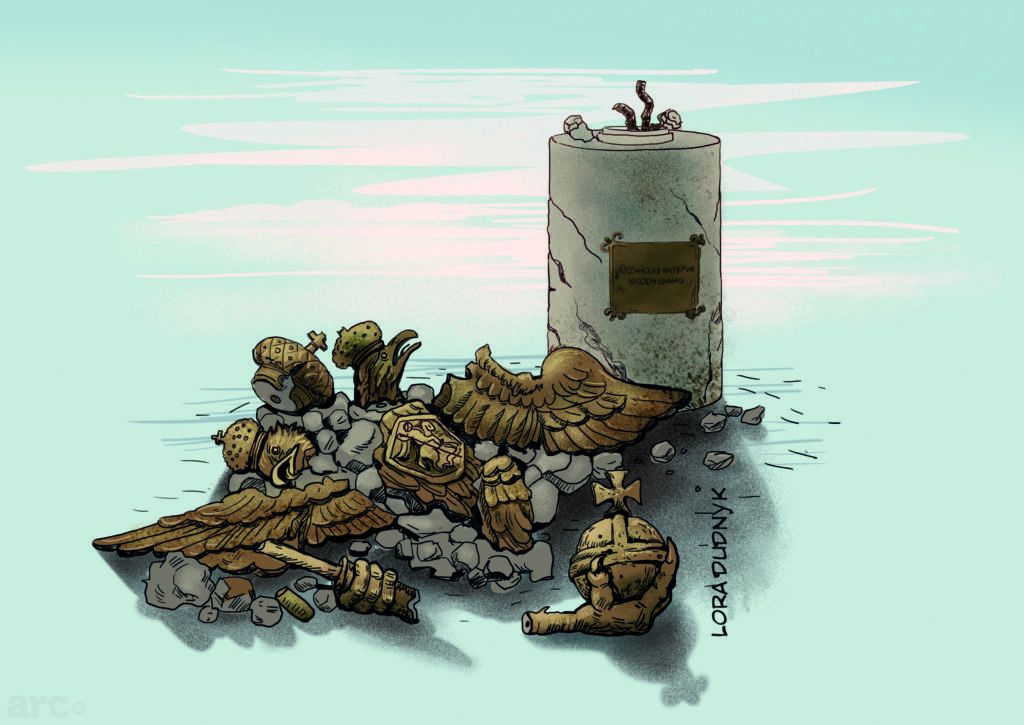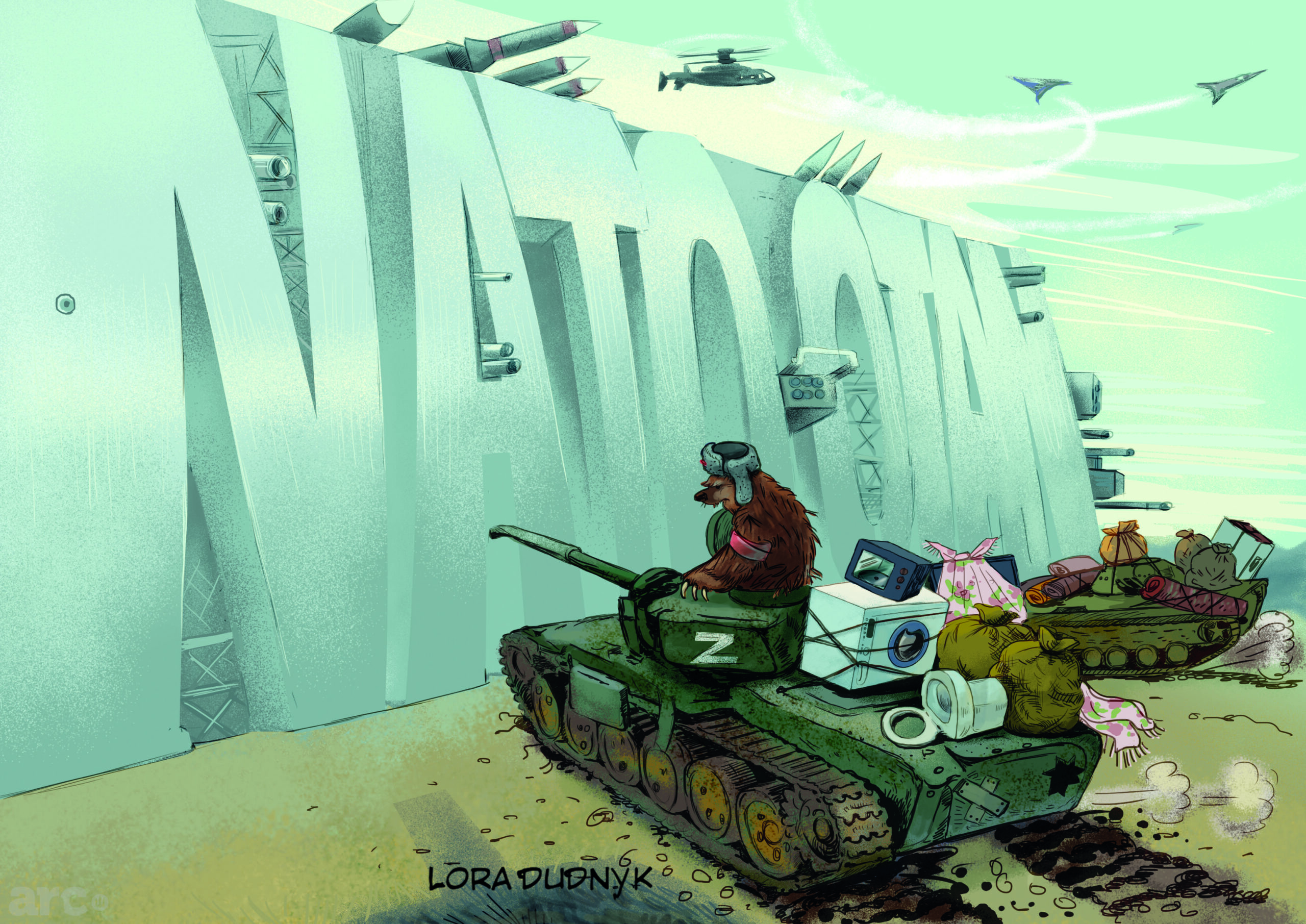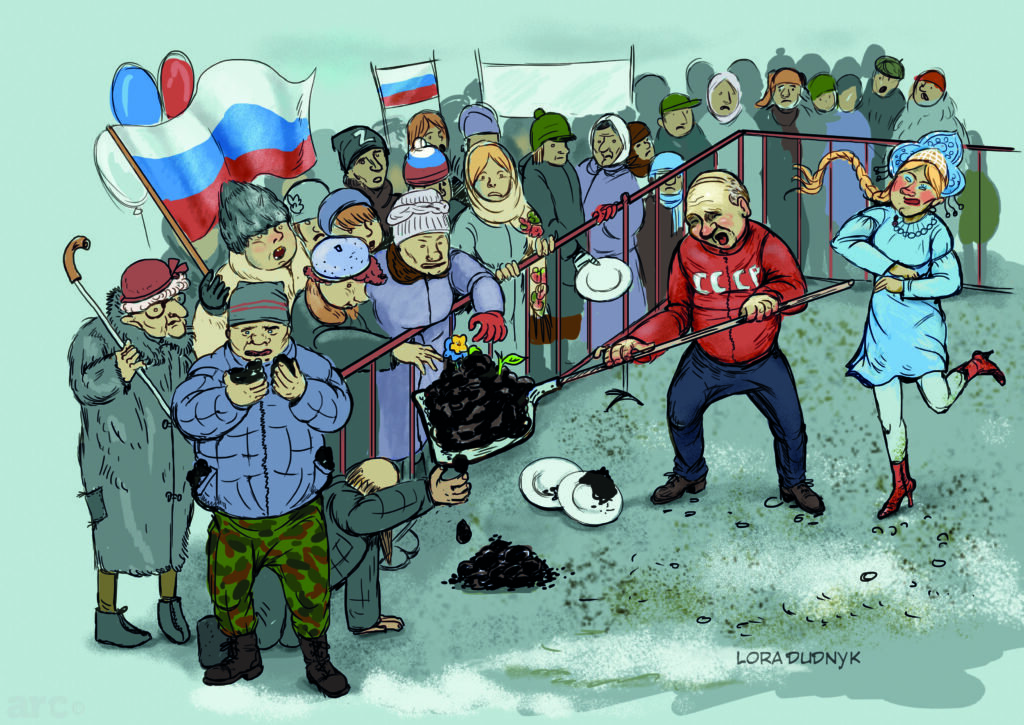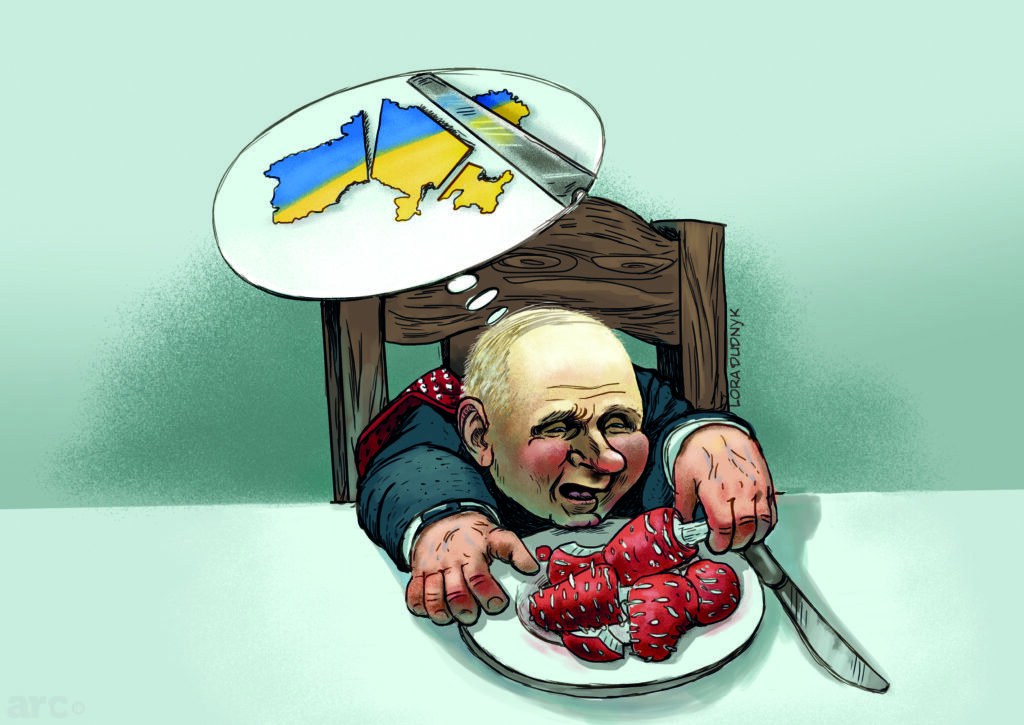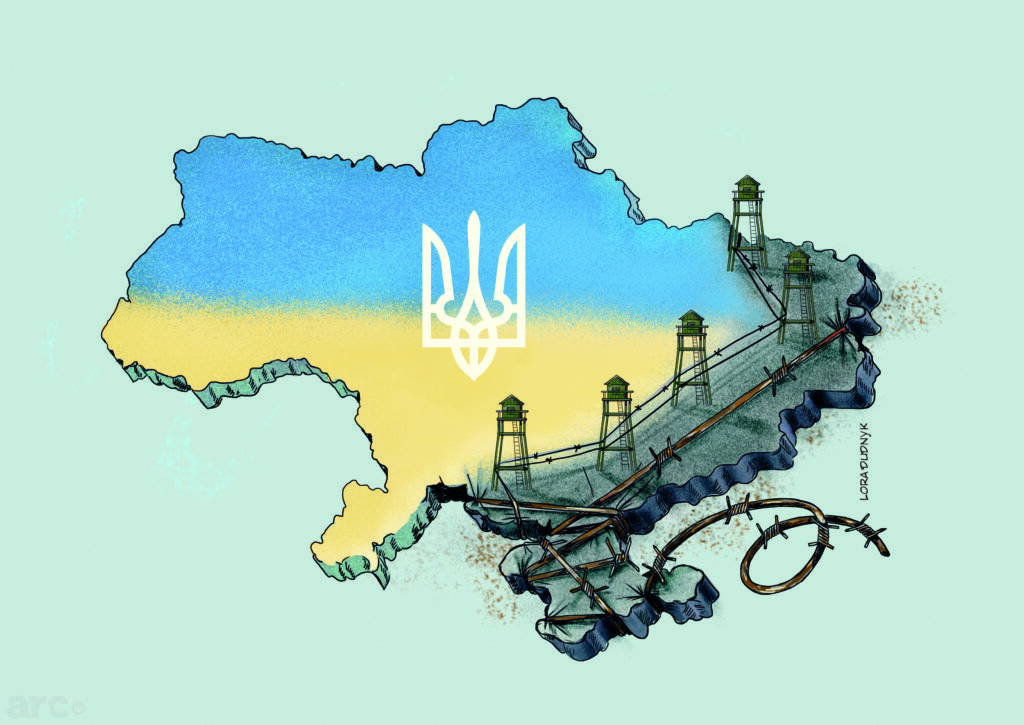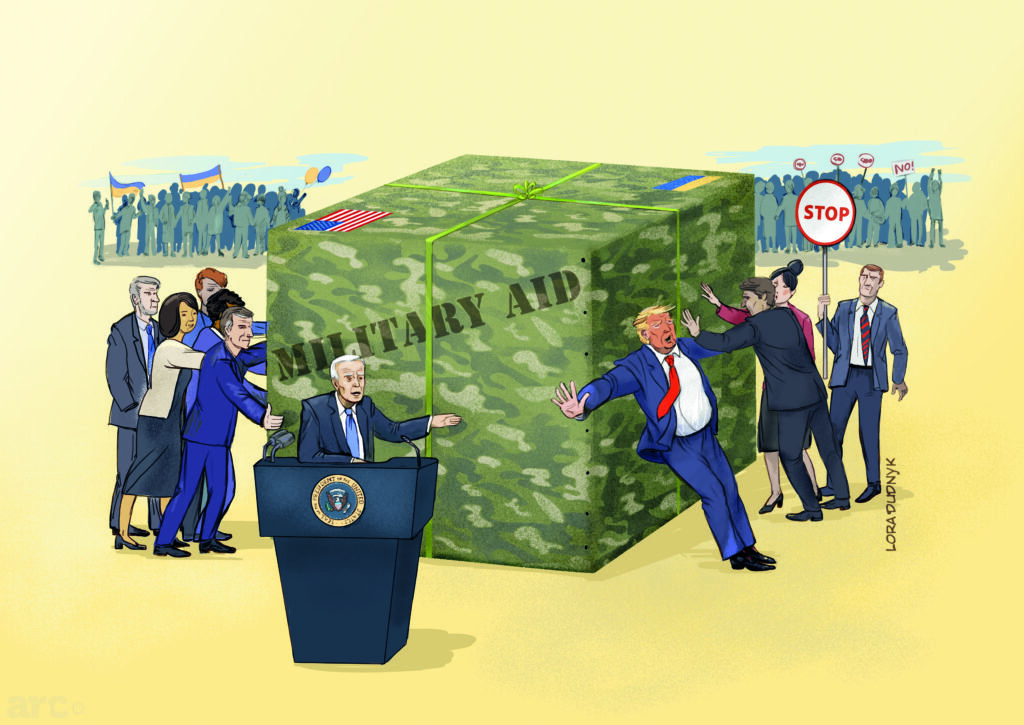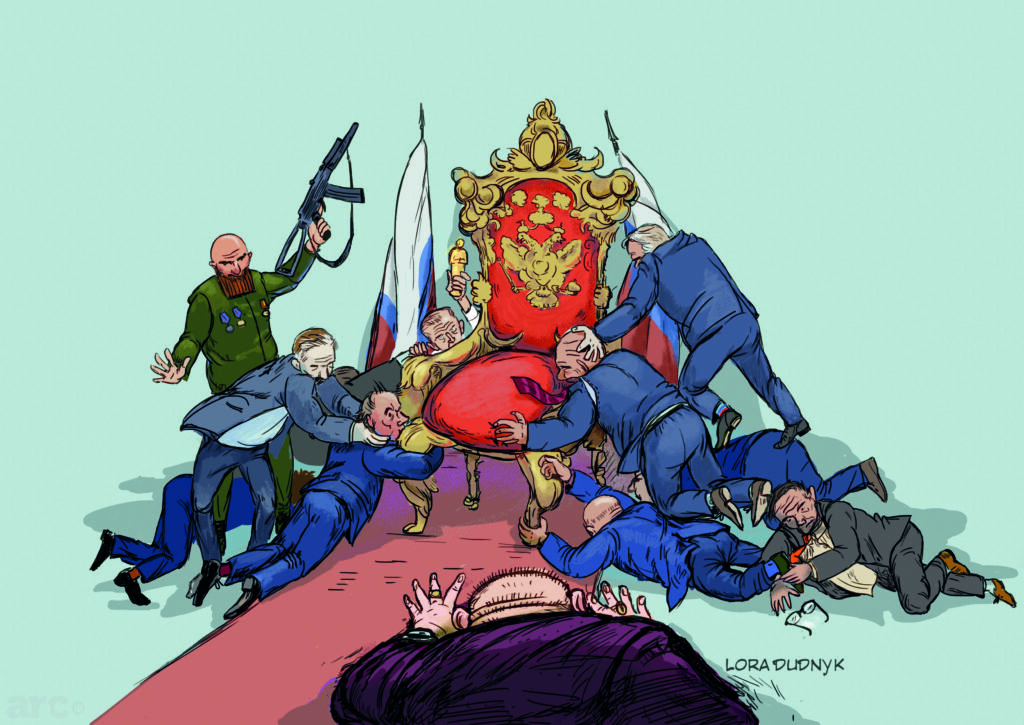WITH THE RUSSIAN invasion of Ukraine now in its second year, the calls for peace are increasing daily. No one wants peace more than Ukrainians, who have already endured 13 months of genocide, rape, electricity blackouts, and daily air attacks. However, the kind of peace produced from the war matters greatly. As Ronald Reagan said, “There’s no argument over the choice between peace and war, but there’s only one guaranteed way you can have peace — and you can have it in the next second — surrender.” For Ukrainians, surrender simply isn’t an option.
Ukraine will never again be the same country it was prior to the full-scale invasion. After February 24, 2022, Ukrainians spoke of life only in the terms of “before the invasion” and “now.” Following the liberation of Kherson in November 2022, though, they frequently speak about “after the victory” — a sure sign of optimism. Indeed, the largest land war in Europe since World War II would change any country, but Ukraine is managing to maintain hope. And more specifically, the tolerance for Russian hegemony, chauvinism, and corruption is over.
Ukraine gained its independence from the Soviet Union in 1991 but continued living like Russia’s “little brother.” With the Orange Revolution in 2004, Ukraine made a choice to be Ukrainian rather than “little Russian.” During the Euromaidan in 2014, Ukraine made a European civilizational choice over a Eurasian one. Following the full-scale Russian invasion of Ukraine, Ukrainians are making the final break with the Russian world (aka Russkiy Mir).
Although Ukraine is completely breaking with the Russian world, the rest of the world is slow to realize it. For example, former US President Donald Trump made comments in March 2023 that since “there are certain areas [of Ukraine] that are Russian speaking” he “could’ve made a deal” for Russia “to take over something.” Such flippant relativism overlooks the fact that if Mexico made territorial claims for California, Texas, and Florida, because “certain areas are Spanish speaking,” outraged Trump Republicans would be calling for a new Mexican American war. A shared language does not justify the annexation of a country, any more than a shared religious holiday, cultural tradition, or other similarities.
Admittedly, Trump’s statement is calculated to draw a contrast with President Joe Biden’s Ukraine policy and ultimately return the former president to the White House in 2024. It also plays to shrinking public support for Ukraine: a Harris X poll in February 2023 showed 53% of Americans are opposed to giving another $27 billion in aid to Ukraine in 2023 (whereas 47% support continued assistance).1
In Europe, the German and French governments continue to be puzzled as to why Ukraine wouldn’t just make peace with Putin. This can be explained by the German attitude towards Russia being still one of fear following the sacking of Berlin by the Red Army in 1945, and the rape and subjugation which followed. As a result, fear of Russia seems to be a part of German DNA, with a recent poll showing 55% of Germans in favor of Ukraine initiating peace talks with Russia.2 Another component motivating German opinion is the desire to resume business as usual with Russia. Germany’s push for the Nord Stream II pipeline to receive gas from Russia was a key factor in the start of the war since it sent a message trade would be prioritized over the sovereignty of Ukraine. Even with the uncompleted Nord Stream II pipeline and EU sanctions, Germany had $56 billion in trade with Russia in 2022,3 which is down only slightly versus $65 billion in 2021.4 France, while not occupied by Russia in the last century, surrendered to Hitler’s Germany after just six weeks in 1940, accepting a partition of the country and the creation of Vichy France as a vassal state of the Reich. Thus, as the Russian invasion enters the second year, it’s unsurprising many French do not understand Ukraine’s will to fight.
Гуртуйся в орбіті The Arc і отримуй сповіщення про нові оповіді!
While the Biden administration continues to support Ukraine, pressure is growing from a small but vocal segment of Trump Republicans to stop aid under the guise of ending the war. This band of backbenchers organized 57 GOP votes in the House and 11 in the Senate against Ukraine aid in May 2022. These votes came at a time when a Washington Post/ABC News poll showed 76% of Americans supporting more aid to Ukraine.5 Now with less public support for Ukraine aid and a new Republican majority in the House of Representatives after the 2022 elections, there is likely to be even more Republican members pushing for a peace deal. They often use talking points written indirectly through influencers for the Kremlin without realizing it (with others actually relishing in knowing the source). In fact, Russian media outlets reported spending more than $146 million on foreign influence operations and propaganda in the US since 2016.6 The talking points written for a Western audience include: the threat of nuclear war, depletion of the American arsenal of weapons, the need to focus on China instead of Russia, accusing Zelensky of corruption, the need to secure the Southern border instead of helping Ukraine, the war is too costly, the money should be spent in the US, Ukrainians are Nazis, et cetera ad nauseum.
Although the war itself shows no signs of a slowdown, a lack of ammunition and supplies via a Congressional cutoff would force Ukraine to negotiate in the best case scenario and capitulate in the worst. Fortunately, there is no real risk of the US cutting military aid to Ukraine at this time. First, the Biden administration strongly supports Ukraine and has corralled almost all Democratic votes in Congress behind future aid. Secondly, while backbench Trump Republicans oppose aid, the GOP leadership is strongly pro-Ukraine. Reagan Republicans like Senator Roger Wicker — the Ranking Member on the Armed Services Committee, Representative Mike McCaul — the Chairman of the House Foreign Affairs Committee, and of course Senate Minority Leader Mitch McConnell, are not only pro-Ukrainian but have criticized the Biden administration for slow walking weapons to Ukraine. In other words, the more senior the senator or congressman, the more likely they are to realize deadlier weapons delivered faster to the frontlines help Ukraine win the war faster. Thirdly, Ukrainian aid was authorized and approved in the budget vote last year and is set through the end of September 2023. This gives Ukraine time to recapture territory during the summer of 2023 prior to the next vote on aid. The liberation of most of the Kharkiv region in early September 2022 made the inclusion of an additional $12 billion in aid the same month an easy decision for Congress. Subsequently, any substantive Ukrainian gains prior to September 30, 2023, will help quell dissent and silence the skeptics before the 2024 budget vote. “Substantive” in this case is primarily defined as cutting off the land bridge to the Crimean Peninsula and secondarily routing the Russians in Ukraine’s Donbas region.
